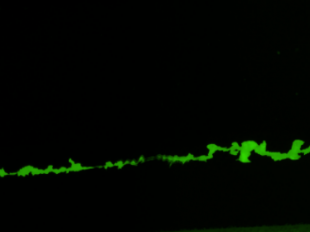This technique combines to two inspection methods (microscopy and fluorescent dye penetrant inspection) commonly used for the detection of surface anomalies such as cracks, porosity, laps, delaminations, and other discontinuities. This joint approach is intended to highlight and...
Tag - dye penetrant
Dye penetrant inspection (DP), also called liquid penetrate inspection (LPI) or penetrant testing (PT), is a widely applied and low-cost inspection method used to check surface-breaking defects in all non-porous materials (metals, plastics, or ceramics).
The penetrant may be applied to all non-ferrous materials and ferrous materials, although for ferrous components magnetic-particle inspection is often used instead for its subsurface detection capability.

